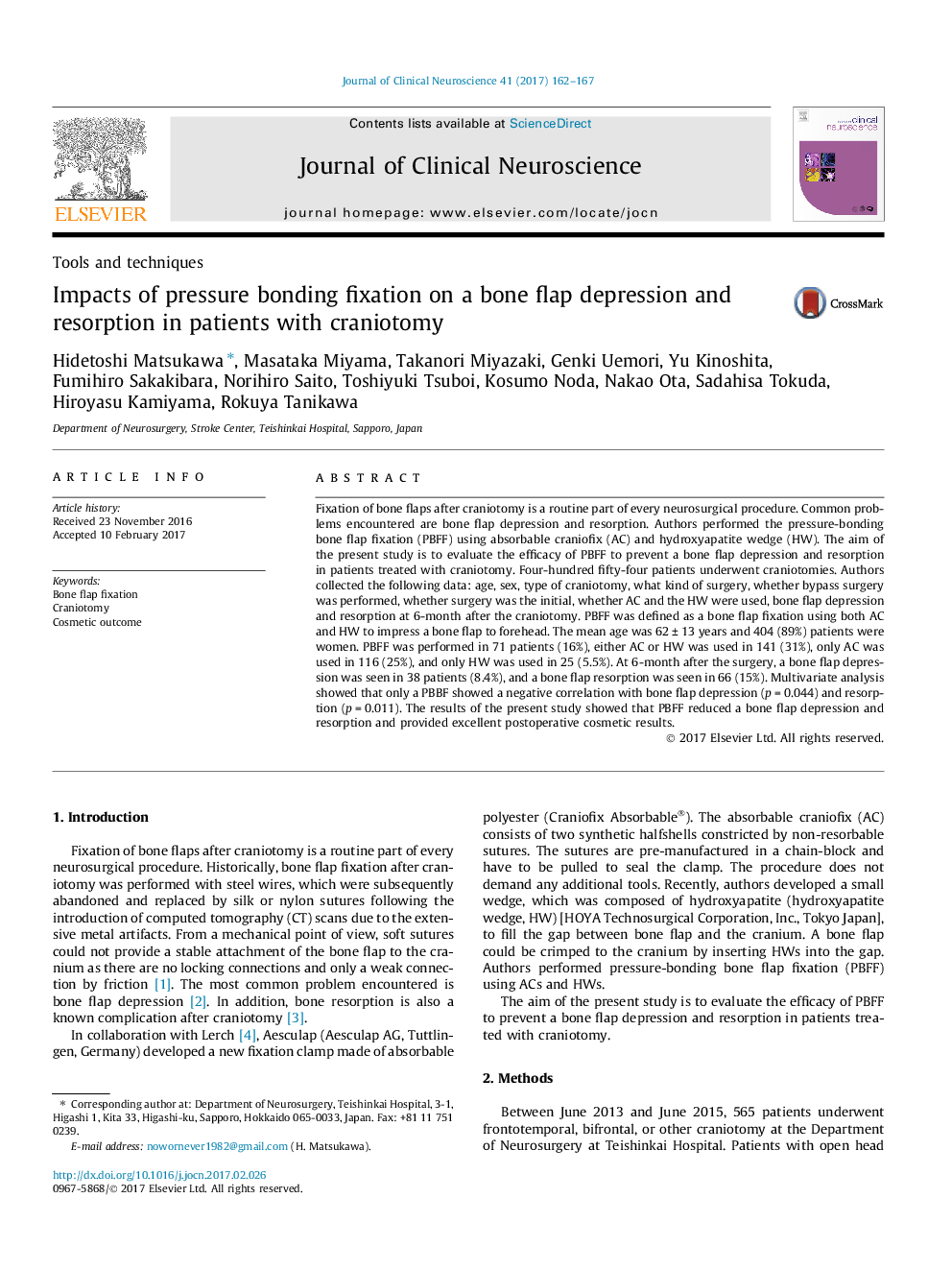| Article ID | Journal | Published Year | Pages | File Type |
|---|---|---|---|---|
| 5629613 | Journal of Clinical Neuroscience | 2017 | 6 Pages |
â¢The 454 patients treated by craniotomy were evaluated.â¢The pressure-bonding bone flap fixation (PBFF) was performed.â¢PBFF consisted of using absorbable craniofix (AC) and hydroxyapatite wedge (HW).â¢PBBF reduced both bone flap depression and resorption at 6-month.
Fixation of bone flaps after craniotomy is a routine part of every neurosurgical procedure. Common problems encountered are bone flap depression and resorption. Authors performed the pressure-bonding bone flap fixation (PBFF) using absorbable craniofix (AC) and hydroxyapatite wedge (HW). The aim of the present study is to evaluate the efficacy of PBFF to prevent a bone flap depression and resorption in patients treated with craniotomy. Four-hundred fifty-four patients underwent craniotomies. Authors collected the following data: age, sex, type of craniotomy, what kind of surgery, whether bypass surgery was performed, whether surgery was the initial, whether AC and the HW were used, bone flap depression and resorption at 6-month after the craniotomy. PBFF was defined as a bone flap fixation using both AC and HW to impress a bone flap to forehead. The mean age was 62 ± 13 years and 404 (89%) patients were women. PBFF was performed in 71 patients (16%), either AC or HW was used in 141 (31%), only AC was used in 116 (25%), and only HW was used in 25 (5.5%). At 6-month after the surgery, a bone flap depression was seen in 38 patients (8.4%), and a bone flap resorption was seen in 66 (15%). Multivariate analysis showed that only a PBBF showed a negative correlation with bone flap depression (p = 0.044) and resorption (p = 0.011). The results of the present study showed that PBFF reduced a bone flap depression and resorption and provided excellent postoperative cosmetic results.
